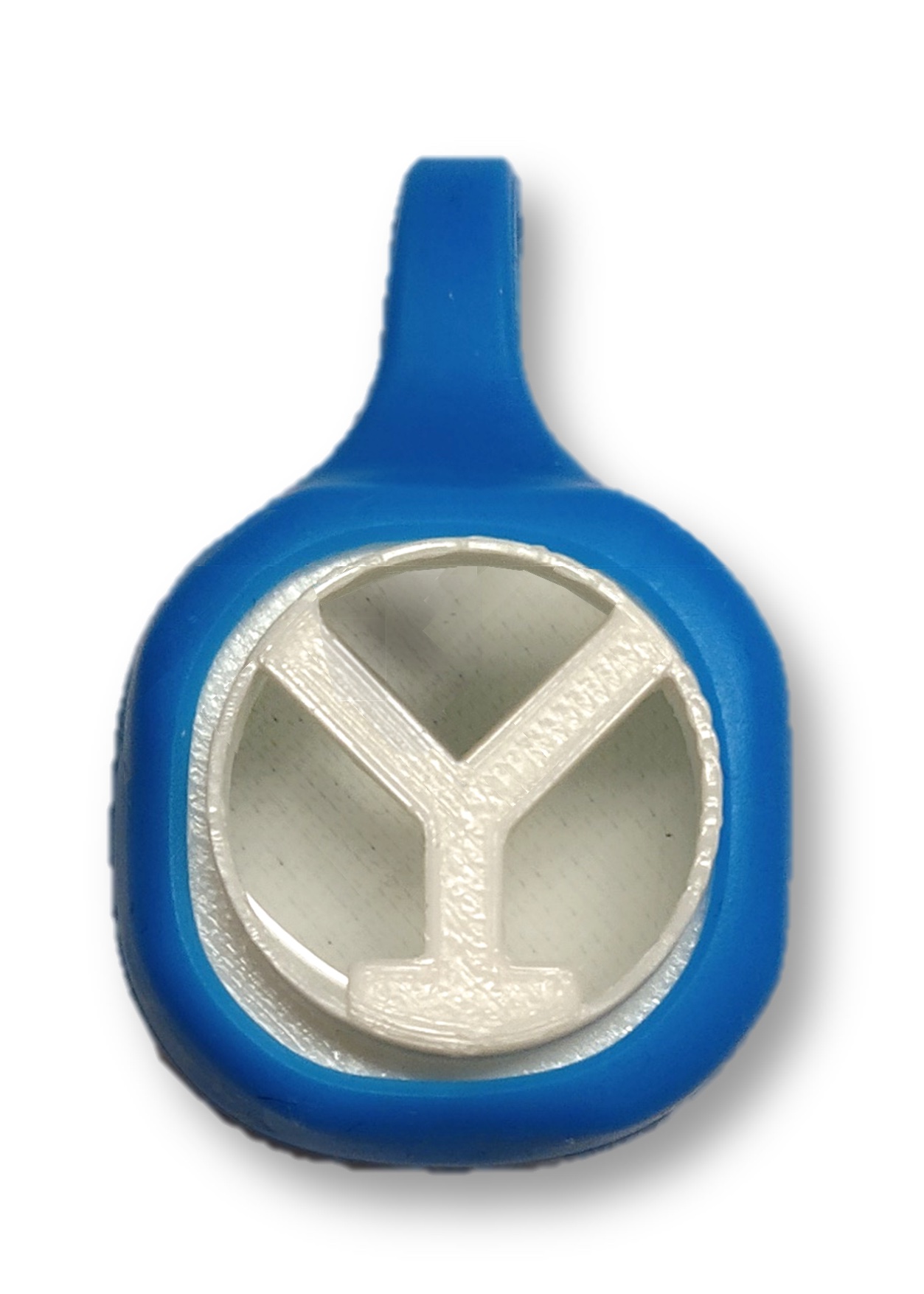Yale researchers develop wearable COVID-19 exposure detection device
In a recent study, researchers from the School of Public Health, the School of Engineering and Applied Science and the School of Medicine collaborated to create a device that detects potential COVID-19 exposure.

Courtesy of Dong Gao
A team of researchers at the School of Public Health, School of Engineering and Applied Science and School of Medicine recently developed the Fresh Air Clip, a device that helps to notify the wearer of potential SARS-CoV-2 exposure.
The Fresh Air Clip is an inexpensive and wearable device that captures airborne SARS-CoV-2 particles. An interdisciplinary Yale research team, headed by Krystal Pollit at the School of Public Health, developed and tested the device. The clip, smaller than an Apple Watch, can be attached to a collar or placed in a room to measure the levels of SARS-CoV-2 in the surrounding air. After a day or a few days, the clip can be sent to a lab to determine the presence of the virus using polymerase chain reaction — PCR — analysis.
“We know that people infected with COVID can release infectious aerosols and droplets in the air in expiratory activities like coughing, sneezing, even talking and breathing,” said Dong Gao, postdoctoral associate at the School of Public Health and one of the lead authors of the study. “The large droplets can settle out of the air very rapidly from second[s] to minutes, but the small aerosols can remain suspended in the air for a longer time period and can travel a long distance, leading to the transmission of SARS-CoV-2. Our study was to use the small Fresh Air Clip to detect the SARS-CoV-2 in the air.”
According to Gao, the total cost of the device will most likely be below $20. Besides the polymer surface inside, the clip has two other components: a case that is 3D printed with a “Y” and an attachment which makes the device wearable. When the analysis is done, Gao explained, only the inside is taken out, so the other components are reusable, which can further reduce costs.
The device is a passive sampler, meaning it does not contain any electronic components. The clip uses a polymer surface — polydimethylsiloxane, or PDMS — to capture the airborne viral particles.
Pollit, assistant professor of epidemiology and assistant professor in chemical and environmental engineering, has focused her research on airborne environmental contaminants and their connection to disease. She explained that PDMS was previously used for capturing airborne chemical contaminants.
“A natural pivot of the work that we have been wanting to go in, in respect to COVID, is to look at non-chemical environmental factors. … We expanded use of our wearable tools to look at respiratory viruses,” Pollit said.
To test the device, the researchers built a chamber that simulated exposure to SARS-CoV-2. They injected a known concentration of viral particles into the chamber, which acted as a rotating drum. The drum created an atmosphere where the airborne virus particles remained suspended. Then, the researchers looked at the rate of uptake of the viral particles by the device.
The team also had restaurant servers, homeless shelter staff, health care workers and community members test the clips in the real-world environment. Sixty-two clips were returned and assessed, and researchers found five positive clips belonging to four restaurant servers and one homeless shelter staff member. The study states that “notably, two positive samples collected in restaurants with indoor dining were found to have high viral load when compared to the other samples (>100 copies per clip), suggestive of close contact with one or more infected individuals.”
The results from the study suggest that the device can detect infectious levels of SARS-CoV-2 exposure, but is also sensitive enough to detect sub-infectious exposure events — where chances of infection are relatively low.
“We can detect down to four copies of COVID per sampler,” said Darryl M. Angel, an environmental engineering doctoral candidate and one of the lead authors of the study. “Those are really low exposure levels. Those exposure levels are below the infectious dose of COVID.”
As Pollit outlined, these clips can be used in two main ways. First, individuals who are concerned about their exposure or often going into environments that they believe put them at higher risk can use the device. Second, clips can be placed in different locations such as hospitals as tools to evaluate risk. Pollit describes the benefit of “placing it into different high risk settings so we can work with administrators to better institute infectious control measures.” Some examples of these measures are the more defined use of personal protective equipment, enhanced ventilation and decreased occupancy.
The Yale New Haven Hospital provided support to the researchers by allowing them to deploy clips in the hospital settings. Two Yale College undergraduate students, Jacob Eldred ’24 and Kayley DeLay ’22, also assisted with the study. This team underscored the interdisciplinary nature of developing new technologies in the face of the ongoing pandemic.
Looking to the future of the device, Pollit said, “we are exploring the best path forward that we can make it the most widely available and still be able to accommodate people’s needs.”
On Jan. 26, the Centers for Disease Control and Prevention reported 561,181 new cases of COVID-19 in the United States.







